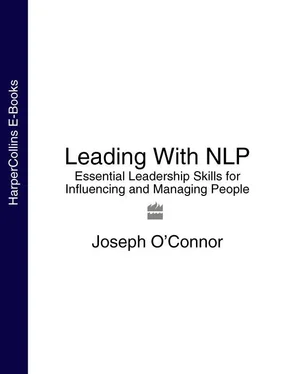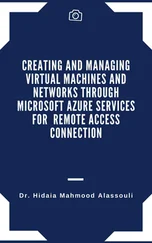You can use this book in any area of your life where you want the benefits of being a leader. I will concentrate, however, on business examples because leadership is so important in business and business holds so many opportunities to be a leader.
Leadership is no easy ‘faddish’ package that you can hand out as part of a corporate restructure to solve all your problems. It needs work; you need to develop the ability to respond to challenge as well as deal with the specific challenges that arise in the course of your business. I want to look at leadership from the inside as well as the outside. What are the most useful ways to think about managing a business? What skills are needed? Leadership holds some answers to these questions.
The Management Agenda , a report published by the Roffey Park Management Institute in 1998, contained the replies of a sample of managers to questions on work issues. Many were critical of senior managers for lacking leadership. At the same time, they said that they themselves were expected to be leaders, yet they had no training on what this involved or how to adjust to this new identity. There seems to be a need for leadership in business and at the same time a vacuum about what this means in practice and how to make the change.
Leadership is part of, and the result of, the great changes in management practice in the last 20 years. It replaces the old ‘command and control’ model of running an organization. ‘Command and control’, based on a military mentality, was appropriate in a different social climate and a stable business environment. Now this stability has gone, a casualty of a frenetic pace of change, new values of self-esteem and individual responsibility and a business culture that values employability above employment. In most business organizations, particularly in the Western world, we just do not obey orders any more – at least not without good reason. But leaders are still needed, both to guide the organization and to develop others as leaders.
Leadership is not a quality that can be rationed or controlled; rather, it is based on purpose, vision and values: purpose to set the destination, vision to see where you are going and values to guide you on the way towards a successful and sustainable future.
When I think of how organizational leadership could be, I think of the flight of a flock of birds. I watched a flock of starlings swoop over the horse chestnut trees close to where I live a few days ago. The birds moved together in beautiful and intricate patterns, moving away and then sweeping back, describing a sort of figure of eight, but no pass was quite like any other. How did they do it? There were one or more birds at the front, but they were not issuing orders to the others, telling them exactly how to move so they all stayed together. The leader (if the one at the front was the leader) was different every time they passed over my head. Yet somehow they not only flew together, but also kept in formation. They could adjust in a split second to keep the pattern, but the pattern was never identical from moment to moment. How did they stay together in that marvellous formation like liquid rolling through the air? How do starlings organize themselves, keeping their individuality and yet being part of a wider coherent group? There seems to be an intelligence that emerges from the group, coming from the intelligence of each member, yet larger than that possessed by any individual.
Leaders face the organizational challenge of creating the context where that larger intelligence can emerge without diminishing the individuals in any way. The more the individuals use their own intelligence to the full for themselves, the smarter the group becomes. This is the puzzle and the challenge of how individual and organizational learning work together. So, here is the secret of organizational leadership. How do you develop each person as a leader and get them all to fly in formation?
What resources do we have to help us achieve this? Neuro-Linguistic Programming (NLP) is a broad field that began in the mid-1970s modelling excellent communicators – finding out how they did what they did so well. NLP models how we do what we do. In essence it studies the structure of subjective experience – how we create our own unique internal world from what we see, hear and feel, and how in turn our mental world shapes what we allow ourselves to see, hear and feel. NLP has modelled top people in every field – managers, salespeople, teachers and trainers – in order to teach others these skills, so they do not have to reinvent the wheel. It has a wealth of material from leaders – how they think and what they believe.
NLP is made up of three parts:
‘Neuro’ is our neurology – how we think and feel.
‘Linguistic’ is the language part – what we say, how we say it and how we are influenced by what we hear.
‘Programming’ is how we act to achieve our results.
NLP helps us to understand what leaders do and how they get their results, so you can take those parts that suit you and that fit in with your values and beliefs. You don’t copy them, you learn from them to achieve your goals. Whatever skills you have, NLP can help you make more of them. It also gives practical ways of developing those skills, not an intellectual appreciation of how nice the skills would be to have or how great they are in other people. NLP is a valuable guide on the leader’s journey.
Our second guide on the journey is systemic thinking – thinking in terms of feedback and relationships, seeing patterns, not isolated events. Leaders have to understand the system they are in, and systems do not operate logically, small changes can produce large effects and these need not occur in the same place or at the same time as the cause. Straight-line cause and effect thinking does not work in business organizations, because they are complex systems. There may be many effects from just one change. Also, what you do to solve a problem may actually perpetuate it, or even make it worse in the long run. But when you think systemically, you think past the obvious to the dynamic patterns that generate a problem.
A third resource is the insights from the discipline of complexity science. Complexity is the application of systems thinking to complex systems (like business organizations) that behave in complicated ways. Recent research has given us some fascinating insights into complex systems that we can tentatively apply to business. For example, a few simple rules can generate very complex behaviour. What are the rules that hold the flock of birds together and how might those rules map over into creating a prosperous and successful organization? We can make some interesting speculations. Also, there seems to be an optimum point for a business – between the indolence of too much deadening procedure and the chaos of too much change. Too much order and the business becomes inflexible, too rigid to react quickly enough to the demands of the external market or the demands of the people within it. Too much freedom and the organization does not work either: rules change too quickly and people become disoriented and confused. People can learn best at the delicately poised point of balance between the two extremes. How can an organization get to this ‘edge of chaos’ with enough creativity to adapt to change, but within a structure stable enough to operate effectively? Getting to this edge is one of the main tasks of an organizational leader.
Finally, complex systems are not predictable. In theory they may be, but as the old saying goes, ‘In theory there shouldn’t be a difference between theory and practice, but in practice, there always is.’ Complete control is impossible, and even if it were, it would be the kiss of death. There is no book, method or consultant that can tell you how to push the river (although many claim credit that it is their pushing that causes the river to move). But that does not mean you are helpless. Quite the opposite. It is a tremendous relief to admit that you cannot predict and therefore cannot entirely control a complex organization. You can give up trying. Now you can start to see how the organization really works and allow it to organize itself in the best way. This is a leader’s work.
Читать дальше












